A review of the elusive bicolored iris Snouted Treefrogs (Anura: Hylidae:Scinax uruguayus group)
- PMID: 31553727
- PMCID: PMC6760762
- DOI: 10.1371/journal.pone.0222131
A review of the elusive bicolored iris Snouted Treefrogs (Anura: Hylidae:Scinax uruguayus group)
Erratum in
-
Correction: A review of the elusive bicolored iris Snouted Treefrogs (Anura: Hylidae:Scinax uruguayus group).PLoS One. 2019 Nov 14;14(11):e0225543. doi: 10.1371/journal.pone.0225543. eCollection 2019. PLoS One. 2019. PMID: 31725800 Free PMC article.
Abstract
The genus Scinax currently includes more than 120 species, recovered in two major clades, the S. catharinae and the S. ruber clades. The latter comprises 75 species, most of which remain unassigned to any species groups, while 12 are included in the S. rostratus and S. uruguayus groups. In this paper we present a taxonomic review of the two species currently included in the S. uruguayus group, discussing some putative phenotypic synapomorphies of this group. Although S. pinima and S. uruguayus have been considered as distinct species, this has been based on scant evidence, and several authors doubted of their distinctiveness. Our study of available specimens of S. pinima and S. uruguayus corroborates that both are valid and diagnosable species based on phenotypic evidence. Furthermore, our results show that S. pinima previously known only from its type locality, has a much widespread distribution than previously thought (including the Brazilian states of Paraná, Santa Catarina, and Rio Grande do Sul), which, added to the biological information presented here allows to suggest the removal of this species from the "Data Deficient" IUCN Red List category to "Least Concern". Also, we describe a new species formerly reported as S. aff. pinima and S. uruguayus from NE Argentina and some localities from the Brazilian State of Rio Grande do Sul. All species are diagnosed and characterized using adult and larval morphology, osteology, vocalizations, cytogenetics, and natural history.
Conflict of interest statement
The authors have declared that no competing interests exist.
Figures
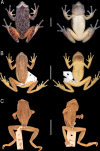



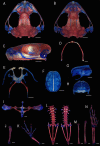
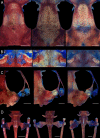



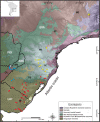
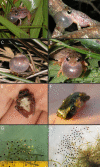


References
-
- Frost DR. Amphibian species of the world: an online reference Version 6.0. 23 Jan 2019). American Museum of Natural History, New York, USA: Available from http://research.amnh.org/herpetology/amphibia/index.html.
-
- Faivovich J, Haddad CFB, Garcia PCA, Frost D, Campbell JA, Wheeler WC. Systematic review of the frog family Hylidae, with special reference to Hylinae: phylogenetic analysis and taxonomic revision. Bull Am Mus Nat Hist. 2005; 294:1–240.
-
- Faivovich J, Pereyra MO, Luna MC, Hertz A, Blotto BL, Vásquez-Almazán CR, et al. On the monophyly and relationships of several genera of Hylini (Anura: Hylidae: Hylinae). S Am J Herpetol. 2018; 13:1–32. 10.2994/SAJH-D-17-00115.1 - DOI
-
- Bokermann WCA, Sazima I. Anfíbios da Serra do Cipó, Minas Gerais, Brasil. 1: duas espécies novas de Hyla (Anura, Hylidae). Rev Brasil Biol. 1973; 33:521–528.
Publication types
MeSH terms
LinkOut - more resources
Full Text Sources
Miscellaneous

